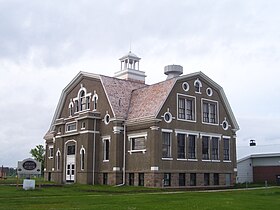
Cathedral High School is a Roman Catholic coeducational parochial high school located in St. Cloud, Minnesota. One of the four high schools in the St. Cloud area, as of September 2022, Cathedral High School enrolls approximately 750 students grades 6-12. Cathedral High School employs 53 faculty members, 100% of which hold bachelor's degrees. The faculty to student ratio is 1:14. It is located in the Roman Catholic Diocese of Saint Cloud.

Crispus Attucks High School is a public high school of Indianapolis Public Schools in Indianapolis, Indiana, U.S. Its namesake, Crispus Attucks, was an African American patriot killed during the Boston Massacre. The school was built northwest of downtown Indianapolis near Indiana Avenue and opened on September 12, 1927, when it was the only public high school in the city designated specifically for African Americans.

Smoky Mountain High School is a public high school located in Sylva, North Carolina. The school formed as a result of the consolidation of the former Sylva-Webster High School and Cullowhee High School in 1988 at the Sylva-Webster campus, which dates to 1960.

Wausau East High School is a public secondary school in Wausau, Wisconsin. It serves grades 9-12 for the Wausau School District.
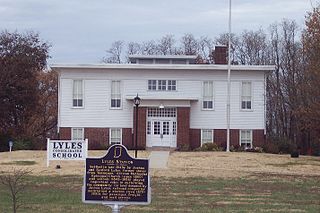
Lyles Consolidated School is a historic school in Lyles Station, Indiana. The third school to be located in Lyles Station, it was opened in 1919 and used until 1958. Abandoned for nearly forty years, it had deteriorated almost to the point of total collapse by 1997. The Lyles Station Historic Preservation Corporation was founded in June 1997, to preserve and promote the history of the Lyles Station community. Its major project was restoration of the schoolhouse, intending to use it as a living history museum to educate others both about Lyles Station's history and the daily school routine in the early twentieth century. The school was listed on the National Register of Historic Places in 1999. Restoration of the site was completed in 2003.

The Historic Old Central High School of Duluth, Minnesota, United States, is a local landmark dating to 1892. One of Minnesota's leading examples of Richardsonian Romanesque architecture, it occupies an entire city block and sports a 210-foot (64 m) clock tower. It was listed on the National Register of Historic Places as Duluth Central High School in 1972 for its state-level significance in the theme of architecture.
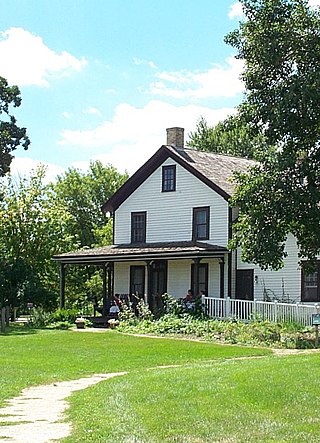
The Gibbs Farm is a museum in Falcon Heights, Minnesota, United States. The site was once the farmstead of Heman and Jane Gibbs, first built in 1854; the existing farmhouse includes the small, original cabin. The museum seeks to educate visitors on the lives of 19th-century Minnesota pioneers and the Dakota people who lived in southern Minnesota before the arrival of Europeans.

The Reid School is a historic school building in Bend, Oregon, United States. Built in 1914, it was the first modern school building constructed in Bend. The school was named in honor of Ruth Reid, Bend's first school principal. The building remained part of the public school district until 1979, when ownership was transferred to Deschutes County for use as a local history museum. Today, the Reid School is the home of the Deschutes Historical Museum. Because of its unique architecture and importance to the history of Bend, the Reid School is listed on the National Register of Historic Places.

The former District School No. 14 building is located on Academy Street in Pine Hill, New York, United States. It is a concrete-sided frame building erected in the mid-1920s.

Old Crawfordsville High School is a former public high school erected in 1910 on East Jefferson Street in Crawfordsville, Montgomery County, Indiana. It was a part of the Crawfordsville Community Schools. The old building was expanded in 1914, 1921, and 1941 to provide additional classrooms, an auditorium, and a gymnasium. A new Crawfordsville High School facility opened at One Athenian Drive in 1993. In 2000 the old school building was converted to a multi-use facility of offices, residential housing, and a fitness center. The former high school building was added to the National Register of Historic Places in 2003. The former high school became a senior living facility and in 2019 was converted into 99 apartment units called The Laurel Flats.
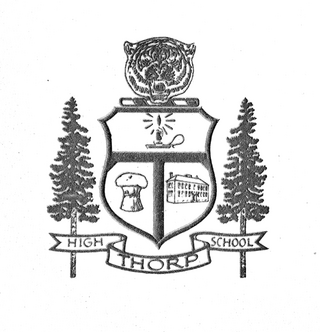
Thorp School District No. 400 is a public school system based in Thorp, Kittitas County, Washington. It provides fully accredited academic, athletic and award-winning extracurricular programs for all grades K-12, as well as a pre-school program.
Owatonna High School (OHS) is a public school in Owatonna, Minnesota, United States. The school was established in 1877. Construction of the current building started in 2021 and finished in 2023 and opened for students fall 2023. It currently has an average of 1600 students and 203 faculty members.

Mantua Center School is a historic building located in the Mantua Center area of Mantua Township, Portage County, Ohio, United States. It was built in 1914 and listed on the National Register of Historic Places on September 4, 2013. The building was listed as an example of early 20th century educational and Neoclassical architecture in rural Portage County and one of the few remaining buildings from that era still standing.
The Alpine Elementary School is a compound consisting of four buildings in Alpine, Arizona, operated by the public Alpine Elementary School District. It serves grades K-8. The original school building of this complex was built in 1930, but a government-funded school had operated here since 1882. The current gym/auditorium was constructed in 1939 for use as a chapel of the Church of Jesus Christ of Latter-day Saints, which had members in the community.
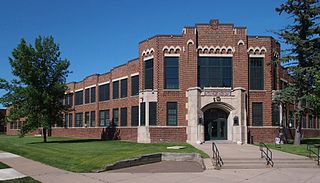
Franklin Junior High School is a historic former school building in Brainerd, Minnesota, United States. The core sections were built in 1932 and extensions were added on in 1954 and 1962. The school closed in 2005. In 2008 the building reopened as the Franklin Arts Center, which leases residential, work, and commercial space to local artists.

The Cole Memorial Building is a historic municipal event hall in Pequot Lakes, Minnesota, United States. It was built in 1937 with New Deal funding, generating jobs and revenue for a community suffering the effects of the Great Depression. With an auditorium large enough to seat 400 people, the Cole Memorial Building served as a key venue for numerous local events. From 1941 to 1967 it was converted into a municipally-run cinema, the Lakes Theater, whose profits were channeled back into community improvements. The building was listed on the National Register of Historic Places in 2004 as the A.L. Cole Memorial Building for having local significance in the themes of entertainment/recreation, politics/government, and social history. It was nominated for illustrating the long-lived benefits and substantial return on investment achieved with New Deal funding.

The Old Winona Middle School is a former school complex in Winona, Minnesota, United States. The east building was originally constructed as the Winona High School from 1915 to 1917 and the west building was added as the Winona Junior High School in 1926. An auditorium was added to the rear of the east building in 1928. In 1988 the complex became the Winona Middle School. The property was listed on the National Register of Historic Places as the Winona High School and Winona Junior High School in 2004 for its local significance in the theme of education. It was nominated for representing local efforts to implement progressive educational trends in updated facilities, while offering cultural experiences to the wider community through professional music performances in the auditorium.

The Milford Rural Agricultural School was a school located at 630 Hickory Street in Milford, Michigan. It was listed on the National Register of Historic Places in 1992, and demolished in 1995.

A two-room schoolhouse is a larger version of the one-room schoolhouse, with many of the same characteristics, providing the facility for primary and secondary education in a small community or rural area. While providing the same function as a contemporary primary school or secondary school building, a small multi-room school house is more similar to a one-room schoolhouse, both being architecturally very simple structures. While once very common in rural areas of many countries, one and two-room schools have largely been replaced although some are still operating. Having a second classroom allowed for two teachers to operate at the school, serving a larger number of schoolchildren and/or more grade levels. Architecturally, they could be slightly more complex, but were still usually very simple. In some areas, a two-room school indicated the village or town was more prosperous.

The Winona Consolidated School, in Winona, Kansas at the corner of Wilson and 5th Streets, was built in 1926. It was listed on the National Register of Historic Places in 2005.








